Sunday
Featured StoriesParenting as Path: Nurturing Confidence in Children
By Chris Tamjidi, Beate Schlage and Sophie Maclaren for Buddhismus Aktuell
As buddhists we often wonder how we can bring up our children in a buddhist way, or at least help them become kind, wise and confident adults. And in today’s world, this can seem difficult; for some people, simply raising children may feel like a hassle – filled with all kinds of stresses and challenges that distract them from their life, or their spiritual path. Some may feel that children are an obstacle to being a buddhist; they demand a lot of time and attention, they prevent us from going on meditation retreats, and they provoke all kinds of irritation and aggression in us. Hardly conducive to spiritual practice, right?
Chogyam Trungpa Rinpoche, founder of the Shambhala community, felt quite the opposite, however. He actively encouraged his students to get married and have children. He said:
People often ask me how children, even infants of four months, can be brought up in a buddhist way. But at this point there doesn’t seem to be a buddhist way to bring up children. It’s more a question of bringing the parents up to a more buddhist approach. That is, the infants bring the parents up to some kind of attitude of responsibility.
This points to the heart of the matter – if we are genuine in being buddhist practitioners, the path of parenting will arise naturally, with the potential to transform us from being closed and self-centered to being open and compassionate. The question of how to raise our children as buddhists then becomes less of an issue. In fact, rather than seeing children as a problem for our spiritual practice, we can view them as the path itself.
Editor’s Note: We are currently on hiatus from publishing new articles; in the meantime, please enjoy this classic item reprinted from our back issues.
The Discipline of Parenthood
A Shambhala text that discusses the development of mind can also be regarded as guidance on how to help nurture our children.
That mind of fearfulness
Should be placed in the cradle of loving kindness
And suckled on the profound and brilliant milk of eternal doubtlessness
The starting point for either one is the same – mindfulness practice.
Personal practice Mindfulness practice is how we place our mind in a cradle of loving kindness. We take our posture in meditation and rest our minds on the breath, seeing and recognizing our thoughts and emotions without judgment and connecting to the basic, open, unconditioned nature of mind, beyond our individual hopes and fears.
Such practice, and through it the connection to simple, nonjudgmental acceptance, is essential to sharing a life with children. One could say that it is the basic discipline of being a parent. Often we think about how to discipline our children, but discipline has to start with ourselves.
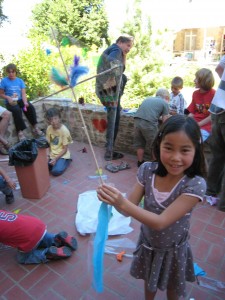 Giving up territory Another aspect of parenthood, which is increasingly forgotten, is being willing to surrender our territory – things like peace and quiet, a good night’s sleep, going out for dinner, clean clothes, doing things when we want to do them, all the things we define ourselves with and entertain ourselves with.
Giving up territory Another aspect of parenthood, which is increasingly forgotten, is being willing to surrender our territory – things like peace and quiet, a good night’s sleep, going out for dinner, clean clothes, doing things when we want to do them, all the things we define ourselves with and entertain ourselves with.
Some modern theories of parenting offer strategies for how to manage our children, that is, how to hold on to our territory – to carve out a little time from our children, to teach them to sleep through the night quickly, or to be less dependent on us. But there is something fundamentally disingenuous about this – children need their parents, they need to be held in the cradle of loving kindness, and this involves surrender on our part, not trying to minimize the disruption and insisting that they act like grownups before they are ready. Without surrender, parenthood is a constant struggle to hold on to our territory, with the little monsters doing all they can to break into the castle of our ego. Children cannot be managed; they must be nurtured.
Surrendering our territory also means taking a hard look at our work. Why is it acceptable to give most of our energy to our work, leaving so little time for our children? If we want to raise our children well, we have to consider surrendering our personal economic goals, our speed, our constant desire to have more and be successful .
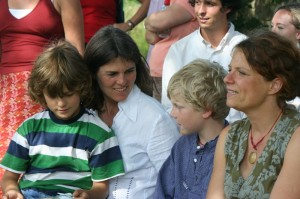 Being mindful The fundamental way to relate with children properly is to be with them fully. This is the essence of what children want from us – our presence, here and now. Children live in the here and now, not in the past or the future. If we are always busy doing things, or caught up in our own emotions, then we are not with them. Parents can spend a whole lifetime not actually being with their children.
Being mindful The fundamental way to relate with children properly is to be with them fully. This is the essence of what children want from us – our presence, here and now. Children live in the here and now, not in the past or the future. If we are always busy doing things, or caught up in our own emotions, then we are not with them. Parents can spend a whole lifetime not actually being with their children.
Jon Kabat-Zinn has spoken beautifully on the importance of mindfulness in parenting:
Mindfulness means moment-to-moment, non-judgmental awareness. It’s cultivated by refining our capacity to pay attention, intentionally, in the present moment, and then sustaining that attention over time. It means becoming more in touch with our life as it is unfolding.
Parenting through mindfulness has the potential to penetrate past surface appearances and behaviors and allow us to see our children as they truly are, so we can act with some degree of wisdom and compassion. The more we are able to keep in mind the intrinsic wholeness and beauty of our children – especially when it’s difficult to see – the more our ability to be mindful deepens.
In working with mindfulness we begin to see that it is our own thought patterns, expectations and emotions that take us away from being in the moment with our children.
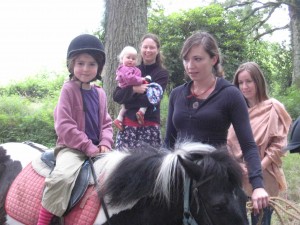 So rather than try to carve out time from children to meditate, why not sit with them, in a good posture, and try to remain utterly present. Be there, unconditionally, open and interested. Children feel this and respond beautifully. The whole space can open up, and we can enter their world – a world of nowness and magic.
So rather than try to carve out time from children to meditate, why not sit with them, in a good posture, and try to remain utterly present. Be there, unconditionally, open and interested. Children feel this and respond beautifully. The whole space can open up, and we can enter their world – a world of nowness and magic.
Authenticity Children penetrate our neurosis like no one else can. With our neurotic patterns and emotions, our hopes and fears, we cover up our hearts and avoid the brilliance that exists in ourselves. Children are masters at putting their fingers in this by exhibiting our behavior back to us. Teenagers in particular are demons in exposing us to ourselves.
What they actually want is for us to be authentic; they long to touch our hearts and be embraced in our hearts. Authenticity, in turn, is what they most respect and learn from. They do not learn from the 1,000 things we say. They learn from how we are: how we comport ourselves, how we behave, how we deal with our life – that is what they suck up with their open, curious minds.
If we put on a spiritual show, they will pierce it with a knife. If we call ourselves buddhists, talking about compassion and wisdom, but act like neurotic, self-centered, New Age seekers, they’re likely to have absolutely no interest in our spiritual tradition. If we have the courage to find out what our children think of our spiritual practice, the feedback may not be pretty.
Letting Children Be Who They Are
The practice of being mindful opens the door to letting children be who they are. We might have all kinds of expectations for our child – becoming a banker, an artist, a buddhist, a kind person, a rich person, a successful person. But these are based on our own preconceptions and may actually have nothing at all to do with the child.
When we look deeply, moment by moment, we begin to really see our children. We see that their surface behavior patterns are just ways to make us aware of their pain. If our child is having a fit, rather than being embarrassed or angry, we see the pain or longing, and it genuinely touches our heart. And we can let it be there – we do not have to push it away.
If a teenager is caught in an addictive pattern such as too much TV or videogame playing or alcohol, we could actually examine what is behind it – what is the tremendous longing that leads the teenager to look for an external support? A longing for nurturing, belonging, comfort, love? Through our mindfulness and awareness, we can create a space of loving kindness and acceptance, in which we can actually work with the patterns at hand.
Household life as sacred Children are very earthy. They do not experience our theories of buddhism or our theories about the economy. They experience our household. The food, the cleanliness, the atmosphere, the light. How we touch them, how we feed them, how we clothe them. This is their world.
If we want to raise children who are sane and compassionate, we have to pay attention to our household situation. We have to appreciate our household. If we regard our daily life with mindfulness, cooking and food as a chance to nourish, clothes as a chance to protect, we can appreciate the sacredness in our existence. Children will feel this immediately – this magic of the sacredness of the household situation is fertilizer for their inner growth.
This does not mean we have to have a classical four person household with the mother always in the kitchen. In patchwork families, children can have just as much appreciation for their different households, the unique flavors and smells, how dad cooks and how mom makes cakes, how dad buys clothes and so on, as in a traditional household. It has nothing to do with traditional or modern, or single or married – it is how we ourselves, with our minds, appreciate our household life and how we relate to it.
Discipline If we have a basis of mindfulness practice, surrendering to parenthood and authenticity, then we can actually really talk about discipline. We all somehow feel we “should discipline” our children. That is what the voices in our head, our society, our expectations tell us. But in the buddhist tradition, discipline is based on openness, acceptance, seeing things as they are, and within that, deciding what is helpful and what is not.
In one Shambhala text it says, “Good and bad, refraining and accepting, are not confused in their mind.” This is a crucial distinction that we need to understand. Early on in a child’s life, this is easy. Fire is hot, it is no. It is painful. Streets are dangerous. A big NO.
But later, things become more subtle. Our child might misbehave. But what is misbehaving? Is it just something we ourselves do not like? Is it dangerous? We start trying to discipline our children, stopping them perhaps from being themselves or doing things we don’t like. In doing this, we lose our authority and then later, when it comes to telling them not to do things that might really be dangerous, they do not respect it, they feel it is just another thing they “should not do.”
So the basic approach to discipline is openness and looking. We see what they are doing. Often it is better to look for a while − a horse that is given a big field to graze in will be calm; one that is boxed in will be wild. It is the same in working with our own minds. Taking the time to see what our children are doing, we see the patterns and what is behind the patterns. We can address them – realize that they are hungry and feed them; realize they have not had enough sleep and help them rest; realize they are reacting to our own frenetic speed and aggression and slow ourselves down. Or we can let it be – let the energy of the situation unwind – let them experience their own behavior in an atmosphere of open and mindful acceptance.
Sometimes, within that, there is a need for a no – and this can then be either a clear no, a strict boundary, or a genuine no based on our own needs – “please don’t do this, this scares me or irritates me or…” So actually, at times, rather than disciplining them, we can share our hearts and this can often work much better than any threat or punishment.
And at times, a clear no, a boundary is required. Children need this – it is how they learn that actions are harmful or non beneficial. If we want to say no, then we need to remain mindful. Saying no from behind our newspaper will not work. We have to enter their space with them – acknowledge their experience, what their energy is and actually say no and stay with them.
Inviting them into our world Children would like to be in our world. They do not want to be in a children’s world. They want to enter our world in a protected and careful manner. If we try to exclude them from our world, push them off into the world of toys and entertainment, their process of growing up might be blocked, or occur in difficult ways.
From a very young age we can invite them into our world. Let them be with us. Let them help in the kitchen. Let them hear about sickness and death. Let them hear that we as parents disagree, or are perhaps sometimes overwhelmed, emotional, scared. We should not see them as crutches to help us deal with our own problems or dump things on them – but we should also not always treat them as “kids” to be kept in the children’s room. Children are little Buddhas, and perhaps they are closer to the wisdom and compassion of buddha nature than we are – we can often be surprised.
Nurturing confidence If we have worked with ourselves in this manner, taken parenthood as a real path, taken its obstacles as opportunities to practice surrendering or mindfulness or compassion, then the children will take something indestructible with them – a natural sense of confidence in their own nature as basic goodness. Because they see us having confidence in our own basic goodness, they begin to have confidence in their own basic goodness.
Basic trust in who they are From a very early age, today’s children are bombarded with ideas and commands about how they should be. We live in a highly competitive world, a leistungsgesellschaft, and children are also caught in this: what they wear, how they are, how they perform in school; hobbies, things to learn, music, arts and crafts. This can put a lot of pressure on children – in many subtle ways.
If, however, we have helped them have basic acceptance of their being, seeing below the surface of things, they can navigate the world with a basic confidence in who they are – recognizing what is good for them and what is not. Children are smart; if they have this basic confidence, then they can filter amazingly easily the messages from outside as to what makes sense for them or not.
Familiarity with mindfulness and meditation Knowledge and familiarity with their own basically good nature gives children a natural confidence and contentment. Nonetheless, as their egos begin to develop and as they face the complexities of this world, they need tools to meet their world with this basic goodness. This is the goal in sharing meditative techniques with children. More and more we see children experiencing stress, anxiety, depression. By teaching children simple meditative techniques, we are actually giving them tools to take care of their own minds and emotions − to be happy. Even a few minutes of daily mindfulness meditation help children connect with their own natural inner harmony and balance. This state of being can become familiar, and give children a reference point to which they can always come back.
Toddlers can be invited to simply sit still and quietly with parents for a moment or two. When children are older than 8 or 9, they can sit for five to ten minutes, following the breath. Parents can say, “Let’s practice being peaceful together for a few minutes every day.” And “Just as it is important to take care of one’s body, it is important to take care of one’s mind.” Because children generally abide in the present moment, and don’t have as much emotional baggage and stress to let go of every time they sit down to meditate, just a few minutes of sitting quietly, or placing their attention on their breath, is often all they need to let go and re-center themselves. When a parent takes the time to sit with a child in this way, they are showing the child that they are committed to cultivating peace, and that the child’s happiness and well being are a priority for them. At the same time, they are showing their trust in the child’s ability to be mindful, which is very empowering for a child.
Basic mindfulness can be taught in everyday situations. Parents can acknowledge and appreciate when a child is practicing mindfulness: “I noticed you remembered to put your dish in the sink; thank you for being mindful of that,” or “You were really mindful of your sister’s feelings in that situation; I think that was helpful to her.” Of course, there will be many situations when a child will not be mindful: running through the house and knocking over a lamp, or saying something hurtful to someone. These are opportunities for parents to gently point out to the child: “Oops, looks like you weren’t being mindful!” This helps a child to begin to recognize on their own when they’re being present in the world and when they may be in need of a “speed bump” to help them slow down and come back to themselves. A speed bump can be any moment of mindfulness scattered throughout the ordinary activities of the day, from sitting meditation to including a moment of silence in an outdoor walk, to ringing a bell for everyone to stop what they’re doing at a particularly chaotic moment (children love freeze games) before resuming activities. Such mindful moments help children to become familiar with their own state of mind and how to work with it. This is very empowering to children – they learn how to self-settle and self-soothe, and they learn that any situation is workable.
Teaching children these simple meditation techniques is like sending them into the world, not adrift on the sea of life, but equipped with a keel and a rudder. These tools help them to be mindful and aware in the world, and to keep an even keel in life’s ebb and flow.
Growing up and education as celebration rather than as a constant insult With such basic confidence, growing up becomes a process of a beautiful flower unfolding. Education becomes the celebration of this flower unfolding. Children can have the confidence to follow their intuition about who they are and what they want to do in life, and what is good for them and what they do not want to do or be.
So in this way, education and discipline can become a real journey of exploration and even celebration for them, rather than a constant insult. They do not have to be continually corrected, trimmed into shape like some garden bush. Rather, their journey is a journey of exploration and discovery, the joyful process of becoming full human beings.
Shambhala Programs for children, youth and young adults:
0 to 5 years: Tiger Club is a group supporting families with young children by allowing a consistent space for parents to practice, and establishing and building a practice community for these families.
8 years: Rites of Passage: Coming of age program empowering eight year olds to begin using the breathing technique in meditation, explore meditative arts and to care for their own mental and emotional well being.
5 to14 years: Bodhi School is a monthly class where, through fun group activities and art projects, children are introduced to sitting meditation and meditative arts, as well as the notion of basic goodness.
14 to 18 years:
Explorers of the Richness of the Phenomenal World is an Outward Bound style program based on Shambhala principles.
Teen Groups provide teenagers with an opportunity to form close friendships with their peers and to make their own connection with Shambhala through classes on Buddhist Studies, Shambhala Arts and Shambhala Culture.
12 to 20 years: Teen Shambhala Training levels follow the basic format of the adult program and cover all the same material, but with more time for socializing and slightly shorter sitting periods.
15 to 25 years: Dechen Choling Youth Leadership Program: A summer program for 15 to 25 year olds who would like to learn more about meditation, buddhism, Shambhala, contemplative arts, teaching children and leadership.
17 to 25 years: Gampo Abbey: Leaving Home and Becoming Homeless. Bi-annual monastic youth dathun.
16 to 30 years: Buddhist Youth Festival: An annual event bringing together 16 to 30 year olds from all over the world to meditate, explore contemplative arts, socialize and discuss topics related to being a young buddhist in today’s world.
10 to 16 years: Shambhala Sun Summer Camp: Sun Camp is a one week long outdoor program open to any participant age 10 to 16 years.
14 to 16 years: Cadet Command Workshop (CCW): The Cadet Command Workshop is a three day program for 14 to 16 year olds who have previously attended Sun Camp. The program focuses on the leadership skills that CCW participants will need to help prepare and take care of, the container and environment in which Sun Camp will take place. CCW is a way of opening and taming the ground before the main body of the Camp arrives.
16-21 years: Rites Of Warriorship (ROW): The Rites of Warriorship for 16 year olds occurs after Sun Camp and, although related, is a separate program. According to Shambhala tradition, 16 is the age marking the end of childhood and the beginning of adulthood. The Rites of Warriorship is an opportunity for 16 year olds to step directly through this transition. Like the coming-of-age rituals of many societies, the proceedings of the Rites of Warriorship are mostly secret.
The program officially begins the day Sun Camp ends, but Rites of Warriorship participants who are eligible are strongly encouraged to attend the week long Sun Camp immediately before ROW. During the camp, you will be expected to look at yourselves honestly and be compassionate with the younger participants. These activities are an integral part of becoming a genuine warrior in the Shambhala Lineage.
Young adults: Youth Nights are regular gatherings with group meditation followed by either a short talk by a member of the group, a reading and discussion, or just a time to socialize together.
Photos by Sophie Maclaren and Chris Tamjidi

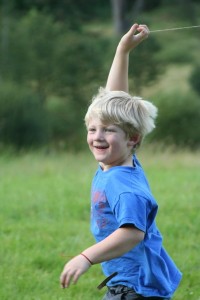
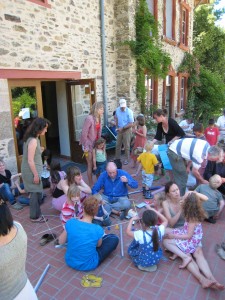
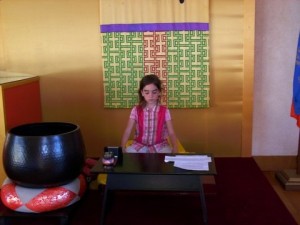




May 13, 2013
Reply
Really helpful article. I am just starting out on the path myself and am sick of hearing myself yell, smack and carry on at my little fella. I want more for him. I especially found the bit about them learning off our actions helpful and will keep that in mind at all times. He is also very much like me and would like him to have control of his mind. Thank you.
Apr 27, 2010
Reply
Thank-you for taking the time to write and translate this incredible piece. I need these reminders over and over again…
Apr 1, 2009
Reply
Very wonderful set of words! Where were they when I was in the midst of parenting 2 young boys? …who are now young men, who have graciously forgiven me my shortcomings. So I must have done something right. All young parents could benefit from reading this article. Thank you!
Apr 1, 2009
Reply
A beautifully written article!